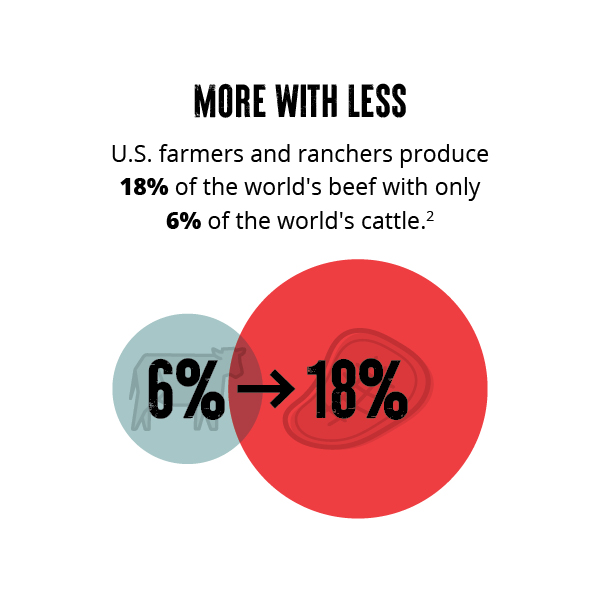Beef Community Spokespeople Promote Beef to New Audiences and Address Myths
“Trailblazers” are known as pioneers who embrace the unknown and challenge the existing order. With their unwavering determination and fearless attitudes, trailblazers push boundaries and inspire others to follow in their footsteps. With that outlook in mind, the Beef Checkoff is taking beef advocacy to an extraordinary level through the Checkoff-funded Trailblazer program.
Developed by the National Cattlemen’s Beef Association, through funding by the Beef Checkoff, the Trailblazer program is an extension of the Masters of Beef Advocacy (MBA) program and acts as the next step in advanced advocacy training and subsequent outreach. With more than 20,000 graduates, the MBA program equips farmers, ranchers, service providers, consumers and all beef community members with the necessary tools and knowledge to become confident and influential advocates for the beef industry through free, self-guided online courses.
Experienced individuals from the growing pool of MBA graduates apply to be a part of the next tier, the distinguished Trailblazers group. This program sets itself apart by training a select few within the beef industry to become expert communicators, helping them excel in media interviews and understand how to build confidence in beef-related practices when talking to consumers. Throughout the year, Trailblazers receive advanced training from subject matter experts, learning how to effectively engage on various social media platforms, interact with the media and enhance their public speaking skills.
Trailblazers meet online and in-person to constantly improve and refine their skillsets when speaking about beef. Upon joining the program, Trailblazers serve as industry spokespeople and inform beef advocates at the local and state levels on advocacy, media and spokesperson best practices. After completing a competitive application process, only ten Trailblazers are accepted into the program yearly.
MEET THIS YEAR’S TRAILBLAZERS:
- Tucker Brown, Texas
- Colton Coffee, Montana
- Sam Cossio, Washington
- Allison Fender, California
- Rocky Forseth, Montana
- Macey Hurst, Missouri
- Joe Lowe, Kentucky
- Erin Perkins, New York
- Paige Schmidt, Kansas
- Ally Spears, Texas
2022 TRAILBLAZERS:
- Haley Ammann-Ekstrom, Minnesota
- Kacy Atkinson, Wyoming
- Jonathon Black, West Virginia
- Brianna Buseman, Nebraska
- Markie Hageman, California
- Marya Haverkamp, Kansas
- Natalie Jones, Nebraska
Shaye Koester, Nebraska - Sebastian Mejia Turcios, California
- Jaclyn Wilson, Nebraska
The beef industry faces numerous challenges, including misinformation and misconceptions. These advocates will combat these hurdles by being proactive and taking a well- informed approach to advocacy. All recognize the importance of effectively sharing the story of beef production, addressing consumer concerns and fostering trust and transparency within the industry to drive demand for beef.
Interested in the Masters of Beef advocacy and Trailblazers Programs? Visit, MBA.BeefLearningCenter.Org



 More with Less
More with Less